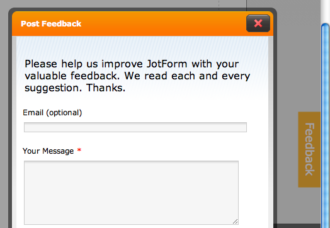It goes without saying that providing a superior customer experience is good for business. What might be less obvious is how deeply connected the employee experience and customer experience are. When your employee experience is positive, it creates the conditions for a first-rate customer experience that has customers and other stakeholders singing your praises.
On the other hand, a negative employee experience can lead to unhappiness and lack of enthusiasm, which often translates to worse customer service and lost customers.
In this article, we’ll examine why employee experience is important for customer experience, highlight a few ways an organization can create a positive employee experience, and share a few Jotform resources to help you do so.
What is employee experience?
Employee experience is the entire lifecycle of an employee’s tenure at your organization, from the hiring and onboarding process through separation and offboarding from your company. Their day-to-day work, interactions with team members and leadership, and environment all play a critical role in their experience during their employment.
Ensuring a positive employee experience in which team members feel valued, encouraged, and supported from their first day to their last results in a motivated and happy staff — and it creates the conditions for a good customer experience.
Why employee experience is important for customer experience
Research illustrates how strong the link is between a positive employee experience and a positive customer experience. When employees feel their organization values and supports them, they’re more engaged and motivated to do their best work, deliver stellar products and services, and provide an excellent customer experience.
On the other hand, when employees feel underappreciated or don’t have the resources or support to do their jobs well, the quality of their work tends to decrease, and as a result, customer satisfaction often declines. Put simply, a positive employee experience creates an environment in which employees are committed to going above and beyond to deliver exceptional customer service.
How businesses that foster a positive employee experience deliver a great customer experience
As we’ve established, a positive company culture creates happier employees who perform better and are more committed to the customer experience.
That’s because fulfilled, motivated, and engaged employees are
- Enthusiastic about their work and go above and beyond to deliver service that increases customer satisfaction
- More empathetic, attentive, and responsive to customers’ needs
- More committed to resolving customers’ challenges and concerns
- Eager to take ownership of every part of the job, including customer satisfaction
- Brand advocates who speak enthusiastically about the company to family, friends, and current and prospective customers
- Committed to delivering top-notch care and support to end users as a direct consequence of the care and support they receive from their employer
How to create a positive employee experience that aligns with an improved customer experience
There are several ways to achieve a positive employee experience that results in an improved customer experience. Here’s a short list of strategies to focus on:
1. Ensure a good onboarding process
A positive employee experience starts with onboarding. A solid onboarding process shapes an employee’s first impression of your organization, sets them up for success from day one, and sets the stage for their ongoing engagement and motivation.
You can offer a seamless onboarding experience with Jotform’s employee forms. You’ll find an employee information form, employee availability form, employee emergency contact form, and over 200 other forms that can streamline your HR processes.
2. Provide robust training and development
Offering employees the right resources and support to do their jobs well, along with providing ongoing growth and development opportunities, are hallmarks of a positive employee experience. This commitment to employee success results in higher levels of employee satisfaction and motivation, as well as a deeper desire to help end users and customers.
3. Build a positive workplace culture
A supportive workplace culture built on respect, shared purpose, openness to feedback, and healthy relationships with team leaders and management leads to happy, engaged employees who are naturally committed to providing a top-notch customer experience.
4. Offer recognition and rewards
Recognizing employee contributions and rewarding employees for a job well done is an essential part of creating a positive employee experience. When employees feel appreciated and believe their efforts matter, they’re more motivated to go above and beyond to help the company achieve excellence. Rewards can be informal, like a shout-out in a team meeting, a simple thank you from leadership, or a gift certificate, or they can be more formal, like a bonus or an employee of the month award.
5. Provide fair compensation and benefits
Of course, another key factor in creating a positive employee experience is the compensation and benefits package. When employers provide fair pay and robust benefits such as paid time off, health insurance, retirement benefits, and other incentives, employees are more likely to feel appreciated and supported, and they tend to be more committed to doing their job well, which positively impacts the customer experience.
By asking your team members to complete an employee benefits survey, you can get a better understanding of whether your current benefits package meets their needs. This also gives you the opportunity to ask for suggestions on how you can improve benefits.
6. Measure employee satisfaction
If you want to create and maintain a positive employee experience, you need to measure employee satisfaction. Jotform’s employee satisfaction survey template gives employees the opportunity to rate their level of job satisfaction and provide important feedback on the work environment, senior leadership, training opportunities, and other areas. Plus, it allows them to provide more detailed feedback through a series of open-ended questions.
Another helpful approach is to conduct an employee engagement survey using employee engagement survey questions.
7. Collect regular feedback
If you want to ensure you’re building a company culture that’s good for your employees and positively impacts the customer experience, it’s important to ask your team members for their feedback on a regular basis — and to make adjustments as necessary. Soliciting regular feedback is essential to understanding what your employees need and where you need to make changes. Gather employee feedback using our robust library of feedback forms, with over 700 templates to choose from.
And finally, be sure you’re measuring customer experience by focusing on the right key metrics and KPIs.
It’s clear that creating a positive employee experience is imperative for achieving a positive customer experience — and a superior customer experience is key when it comes to retaining current customers, attracting new customers, and remaining competitive in the business landscape.
Photo by Amy Hirschi on Unsplash





















Send Comment: